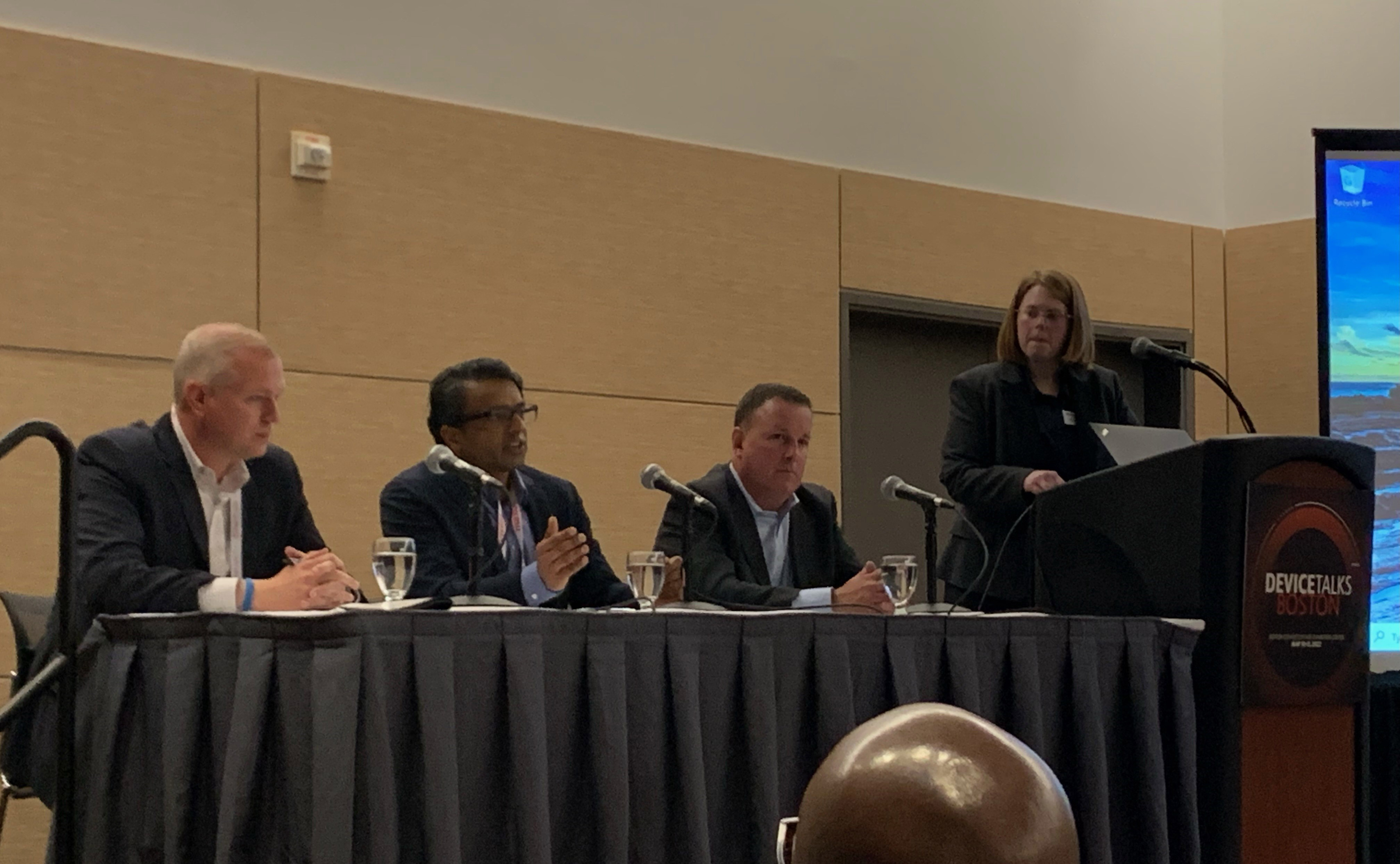
Within a decade, there likely will be no panel discussion highlighting a transition from reusable to single-use endoscopes at conferences like DeviceTalks Boston.
That’s the prediction of Dr. Kapil Gupta, a Boston Scientific Corp. senior medical affairs director for endoscopy.
“In five to 10 years, single-use will be the standard of care, and reusable scopes will be hanging in a closet or in a museum,” he said during the second day of DeviceTalks Boston, in a conversation entitled “How New Designs and Clinical Demand Created the Booming Single-Use Endoscopy Market.”
The event, taking place at the Boston Convention and Exhibition Center on May 10-11, was co-located with the Healthcare Robotics Engineering Forum and the Robotics Summit and Expo, which collectively attracted about 2,900 attendees this year. About 900 of them came specifically for DeviceTalks Boston, according to organizers.
As consumers become more knowledgeable about the potential risks of reusable endoscopes — though the dangers remain small — they will play a significant role in boosting demand, said Wes Scruggs, vice president corporate accounts at Ambu.
“I think consumerism is going to end up driving this,” he said. “Our goal is to completely shift the paradigm of care from reusable to single-use.”
--------------------------------------------
See also: Innovation, Technology, Supply Chains Evolve to Help Med-Techs Meet Patient Needs
----------------------------------------------
COVID-19 afforded Ambu the opportunity to erase the capacity complaint that sometimes plagues reusable cystoscopes, Scruggs added.
The Ambu aScope Cysto launched in July 2020, near the start of the pandemic. Once procedures ramped back up again, the device attained 12 to 13 percent market share in about two years, he said.
Scruggs, Gupta and Dave Carey, chief commercial officer of Pristine Surgical, made up the DeviceTalks Boston panel that addressed how new designs and clinical demand have converged to create a single-use endoscope market.
Gupta outlined three main challenges in the adoption of single-use endoscopes:
The actual costs of reusables — with their required mounds of PPE, large quantities of water and harsh chemicals used in cleaning, among other expenses — can be hard to group into a comprehensible single cost bucket that makes sense to hospital executives when multiple budget lines are involved, Carey said.
“It’s incumbent on us to explain it,” he said. “We’ve got to highlight and educate.”
Earlier in the day, Meghan Scanlon, Boston Scientific’s senior vice president, urology and pelvic health, said that what started out as a value proposition around sterility for that company’s ureteroscope quickly pivoted to something very different after it was launched.
“It’s really about capacity and just making life easier,” she said of that scope, which was the first single-use flexible ureteroscope on the market. “It makes the staff and physicians’ lives so much easier.”
On Day 2 of the DeviceTalks Boston event, panelists also shared ideas about improving diversity in clinical trials in order to make them more statistically sound.
Providing interpreters, improving recruitment materials and incorporating unconscious bias training all play a role in increasing participation in clinical trials.


